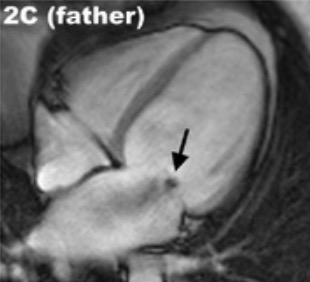Playlist
Show Playlist
Hide Playlist
Diseases of the Heart Muscle – Cardiomyopathy
-
Slides 05 Cardiology Alpert.pdf
-
Reference List Cardiology.pdf
-
Download Lecture Overview
00:08 In this section, we will talk about heart muscle diseases, otherwise known as cardiomyopathies. 00:15 The definition of “cardiomyopathy” is entailed in the name itself: “cardio” meaning “heart”, “myo” meaning “muscle” and “opathy” meaning “a disease”. 00:28 All of these terms come from the Latin and Greek and they mean “heart muscle disease”. 00:34 Cardiomyopathy is a disease that primarily affects the heart muscle. 00:40 We’ve talked about diseases that affect the blood vessels, we’ve talked about diseases that affect the electrical system, and we’ll be talking more about that in a later lecture. 00:50 But, this is a series of diseases that affect the heart muscle. 00:55 Some of them are primary diseases that are genetic and develop because of an abnormality in the DNA code, and some of them are acquired from environmental circumstances. 01:07 And we’re going to look at all of them as we go through this talk. 01:11 Cardiomyopathy often gains attention in the news media. 01:16 Why? Because one form of cardiomyopathy, hypertrophic cardiomyopathy, is the commonest cause of sudden death in athletes. 01:26 And of course, this is a catastrophic event. 01:28 A young, healthy, vigorous person suddenly falls to the field and, if not resuscitated, actually dies. 01:38 We’ll talk about hypertrophic cardiomyopathy. 01:40 Fortunately, most people with it do not stand a chance of sudden death, but there is a small group of individuals with this disease in whom sudden death is a high risk. 01:51 And we’ll talk about that during this session. 01:54 So, let’s go over something about cardiomyopathy, in general. 01:59 First of all, it is the second commonest cause of sudden death after ischemic heart disease, but of course, there are far fewer patients with cardiomyopathy, so far fewer individuals with sudden death compared to ischemic heart disease. 02:15 There is, very severe forms of cardiomyopathy and less severe forms. 02:21 One form called “dilated cardiomyopathy” has a poor prognosis. 02:26 It means that the patient often will have a survival that can be measured sometimes in months or years and is associated with severe heart failure. 02:36 And we’re going to go over this form in considerable detail. 02:41 In general, there are two types of cardiomyopathy. 02:44 There is the primary type. 02:46 This is the genetic type, usually, or it’s a type that we don’t understand what the cause is, but we think it may be genetic. 02:56 And then there is the secondary type, where we know what caused it. 03:00 For example, a viral infection or a drug. 03:04 We’ll talk a little bit about the drugs. 03:06 Some of the chemotherapy drugs that are used, for example, in different kinds of cancer, for example, breast cancer can damage the heart and lead to a secondary cardiomyopathy and heart failure. 03:19 So, the American Heart Association defines cardiomyopathy as you see here. 03:27 Primarily, it is a disease of muscle. 03:30 They distinguish the primary forms from the secondary forms, and you can see in the little diagram on the side, the primary forms and the secondary forms, and some of the reasons for the secondary forms. 03:43 This little diagram is an introduction to what we’re going to talk about for the next 30 minutes. 03:49 The little diagram is a cross-section of the left and right ventricle. 03:54 The four primary cardiomyopathy are numbered 1 to 4. 03:57 HCM is hypertrophic cardiomyopathy. 04:00 This condition features abnormal thickening of the heart muscle, particularly in the septum. 04:05 Notice how the cavity appears smaller while the walls are thickened. 04:09 This is often genetic with mutations in sarcomere proteins. 04:13 The thickened muscle impairs both contraction and relaxation. 04:16 DCM is dilated cardiomyopathy. 04:19 Here we see enlargement of the heart chambers with thinning of the walls leading to reduced pumping efficiency. 04:25 This reduces contractile force and ejection fraction. 04:28 DCM has multiple causes. Genetic factors. 04:32 Viral myocarditis, alcohol chemotherapy, and others. 04:36 RCM is restrictive cardiomyopathy. 04:39 In RCM, the ventricles become stiff, limiting the heart's ability to fill properly. 04:44 As you can see to the right, this form is quite rare compared to hypertrophic and dilated cardiomyopathy, but we'll cover it for completeness. 04:53 MF is endo myocardial fibrosis, a subtype of RCM highlighted in red. 04:57 The distinctive feature is deposition of fibrotic tissue inside the heart, restricting blood flow. 05:03 RVD is a rhythmic genic right ventricular dysplasia. 05:06 This right ventricular cardiomyopathy is also quite uncommon. 05:10 It involves replacement of myocardial tissue with fatty or fibrous tissue, particularly in the right ventricle, which is dilated, shown by the red border. 05:19 The secondary cardiomyopathy. 05:21 These are conditions where heart muscle disease occurs secondary to another identifiable cause in hypertensive hypertrophic cardiomyopathy, the wall thickening occurs in response to chronic pressure overload from hypertension. 05:33 The pattern of hypertrophy is typically concentric rather than asymmetric. 05:37 Similarly, aortic stenosis can produce a similar pattern due to pressure overload in ischemia. 05:43 Cardiomyopathy, which is shown here, refers to dilated cardiomyopathy resulting from coronary artery disease and myocardial infarction. 05:52 Remember that the structural changes correlate with specific functional abnormalities. 05:56 Clinical presentations and treatment approaches that we'll explore in subsequent lectures. 06:01 It's worth noting that the commonest forms are hypertrophic and dilated cardiomyopathy, so we'll spend most of our time discussing those. 06:09 Just as in coronary disease and atherosclerosis. 06:12 There are a number of demographic factors associated with cardiomyopathy development, such as uncon trolled high blood pressure, postpartum cardiomyopathy in some women after pregnancy, viral infections, excessive alcohol use, and inherited forms. 06:28 African-Americans of both genders have an increased risk of having cardiomyopathy in the United States, likely due to genetic polymorphisms. 06:37 Small changes in DNA that predispose to heart muscle disease. 06:41 In our future, sessions will delve deeper into the clinical presentations and management of these conditions.
About the Lecture
The lecture Diseases of the Heart Muscle – Cardiomyopathy by Joseph Alpert, MD is from the course Cardiac Diseases.
Included Quiz Questions
Which of the following is often a primary form of cardiomyopathy?
- Hypertrophic cardiomyopathy
- Viral infection
- Uncontrolled thyrotoxicosis
- Systemic lupus erythematosus
- Hemochromatosis
Which of the following is not associated with either the frequency or severity of cardiomyopathy?
- Height
- Viral infections
- Alcohol abuse
- Peripartum period
- Male sex
Customer reviews
5,0 of 5 stars
| 5 Stars |
|
5 |
| 4 Stars |
|
0 |
| 3 Stars |
|
0 |
| 2 Stars |
|
0 |
| 1 Star |
|
0 |




